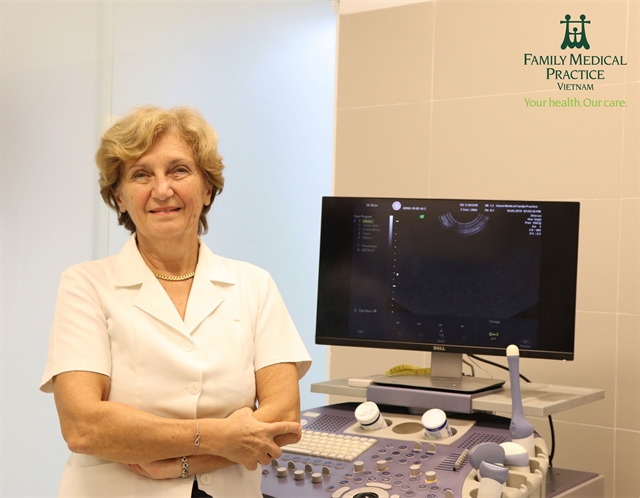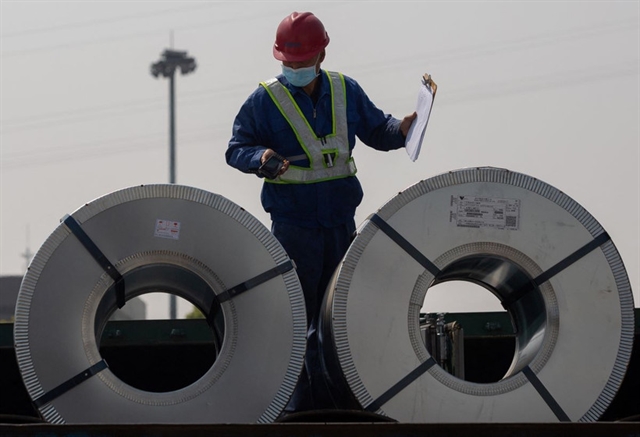 Life & Style
Life & Style


|
| Dr. Elisabeth Blanchi. — Photo courtesy of Family Medical Practice |
By Dr. Elisabeth Blanchi*
The decision to have a child is probably the most important in our life! More and more frequently, a woman plans to have her first baby after 35 years old because of economic or professional reasons, even sometimes simply for fear of changes in her body. Why would it be more complicated at this age?
The maximum of fertility is between 25 and 29 years old. Getting pregnant after 35 takes more time (probability to be pregnant is 25 per cent per cycle at 25 years old; 12 per cent per cycle at 35 years old and 6 per cent per cycle at 40 years old). From age 35 the anovulatory cycles are more frequent: it means that the woman can have menstruation without producing an egg. The number of oocytes (eggs) is decreasing during female lifespan – 400,000 at birth becomes 35,000 at age 35 – and their quality is fading. If the attempt to have a baby is not successful after 6 months of trials, it is advisable to see a gynaecologist because if IVF (in vitro fecundation) is necessary, it must not be done too late. In fact, despite the progress of Assisted Reproduction Techniques, we cannot overcome the ovarian aging. Before considering IVF, it is necessary to have a specific blood test (AMH) which evaluates the number of oocytes still likely to mature. Such a test avoids expensive and time-consuming treatments without any chance of success.
Related to the mother’s age, some complications during pregnancy and childbirth could be expected. The main problem that occurs often with advanced age is the presence of fibroids in the uterine wall which could trigger contractions and thus premature labour. They can also be responsible for placental detachment, as well as abnormal position of the foetus in the uterus during the last month. Maternal pathologies more frequently noted, especially during the third trimester, are diabetes and high blood pressure with the risk of pre-eclampsia. During labour, the dilatation stage is longer because the tissues are less soft. As a result, expulsion might be slower with higher risk of foetal distress. Therefore, there is more chance to have a C-section.
The risks for the foetus are linked to what is explained above. The consequence of ovaries getting older is more genetic abnormalities, therefore more chances of miscarriage. It is accordingly recommended to perform between the 9th to 12th week of pregnancy some tests (Bi-test or NIPPT) to rule out embryo chromosomes anomalies. After age 35 there are statistically more cases of foetal intra-uterine growth retardation leading to anticipation of the date of birth by the obstetrician.
Even if you are in good health, for gynaecologists a pregnancy after 35 is considered a high-risk pregnancy. For this reason, women should be aware of the risks associated and should be followed by trained ob-gyn specialists. The follow up will be the same as for a 25 year old woman (7 prenatal visits and 3 ultra-sounds) except that the medical checks must be slightly more exhaustive, particularly for blood pressure, diabetes tests, maternal weight gain and foetal growth. The future mothers should attend regular pre-natal exams without missing a single one and must be more rigorous when following their doctor’s instructions. Starting pregnancy with a healthy weight (neither overweight nor underweight) and stopping smoking are essential. Before and during the first trimester of pregnancy, taking daily folic acid because it prevents neural tube defect is advisable.
These few considerations will help you to live this wonderful experience with a maximum of security. Don’t forget that, when we want to be totally ready to give birth to a child in a perfect and ideal environment, we take the risk to wait too long! Anyway, more and more mothers are pregnant after age 35 and they and their baby are perfectly healthy and happy! Family Medical Practice Vietnam
*Dr. Elisabeth Blanchi is an experienced Gynecologist/Obstetrician at Family Medical Practice Hanoi. She obtained her MD at University of Marseille, France in 1976 with a specialisation in Gynecology Obstetrics in 1980. Before coming to Việt Nam, Dr. Elisabeth worked at the maternity ward at various public and private hospitals in France, Egypt, the Philippines, and Italy.
Family Medical Practice was the first foreign-owned primary healthcare provider in Việt Nam, and has consistently remained at the forefront of international-standard medicine since 1994. It offers extensive healthcare and emergency medical services nationwide to Vietnamese, expatriate and corporate customers.
For more advice on any medical topics, visit Family Medical Practice Hanoi at: 298 I Kim Mã, Ba Đình. Tel: (024) 3843 0748. E: hanoi@vietnammedicalpractice.com.
FMP’s downtown Hồ Chí Minh location is: Diamond Plaza, 34 Lê Duẩn, District 1; 95 Thảo Điền, District 2. Tel: (028) 38227848. E: hcmc@vietnammedicalpractice.com
FMP Đà Nẵng is located at 96-98 Nguyễn Văn Linh, Hải Châu District, Đà Nẵng. Tel: (0236) 3582 699. E: danang@vietnammedicalpractice.com.




